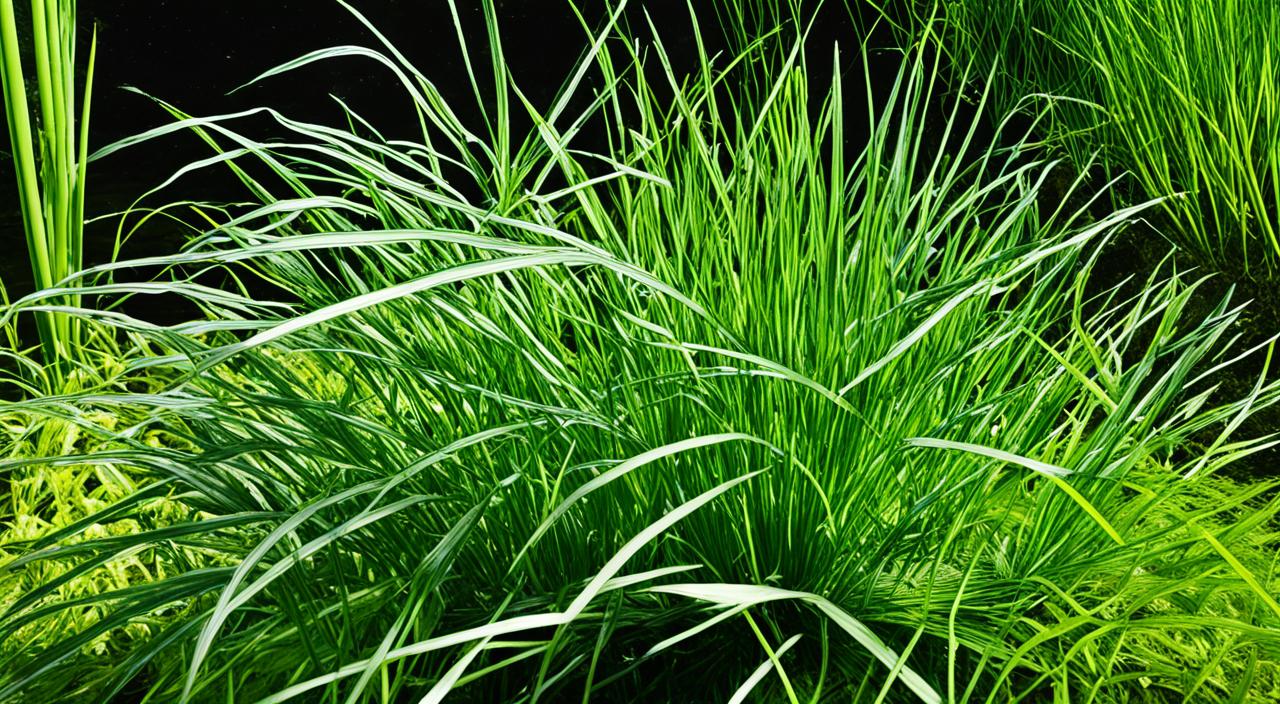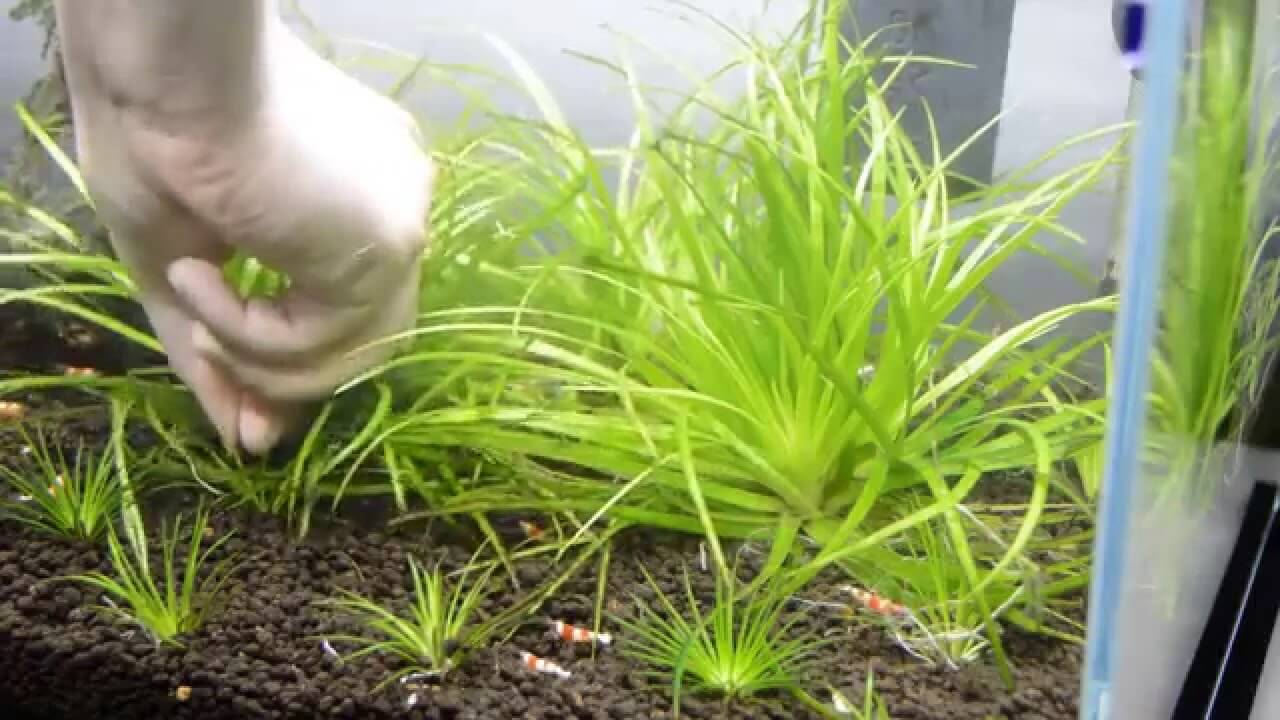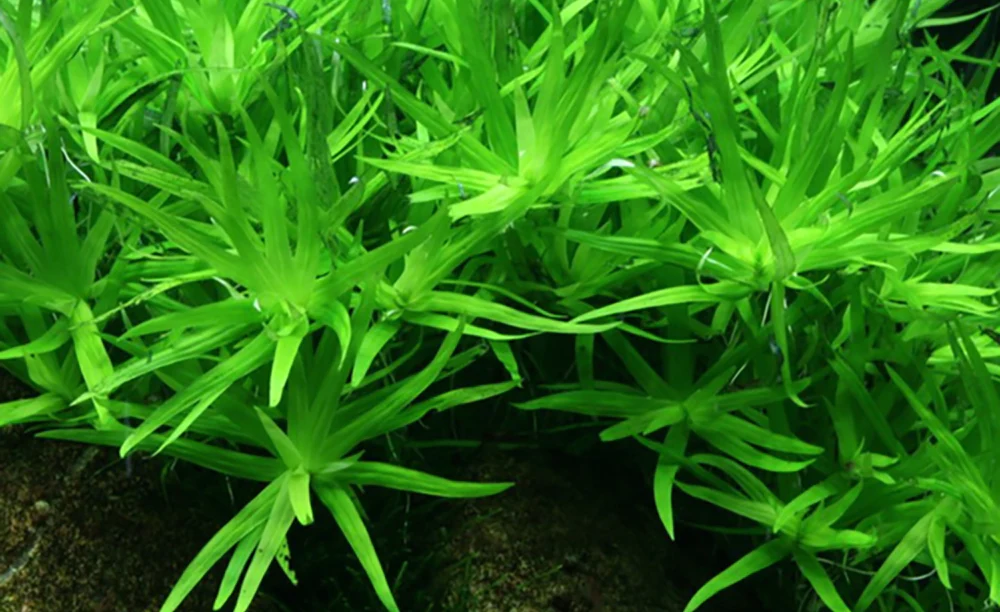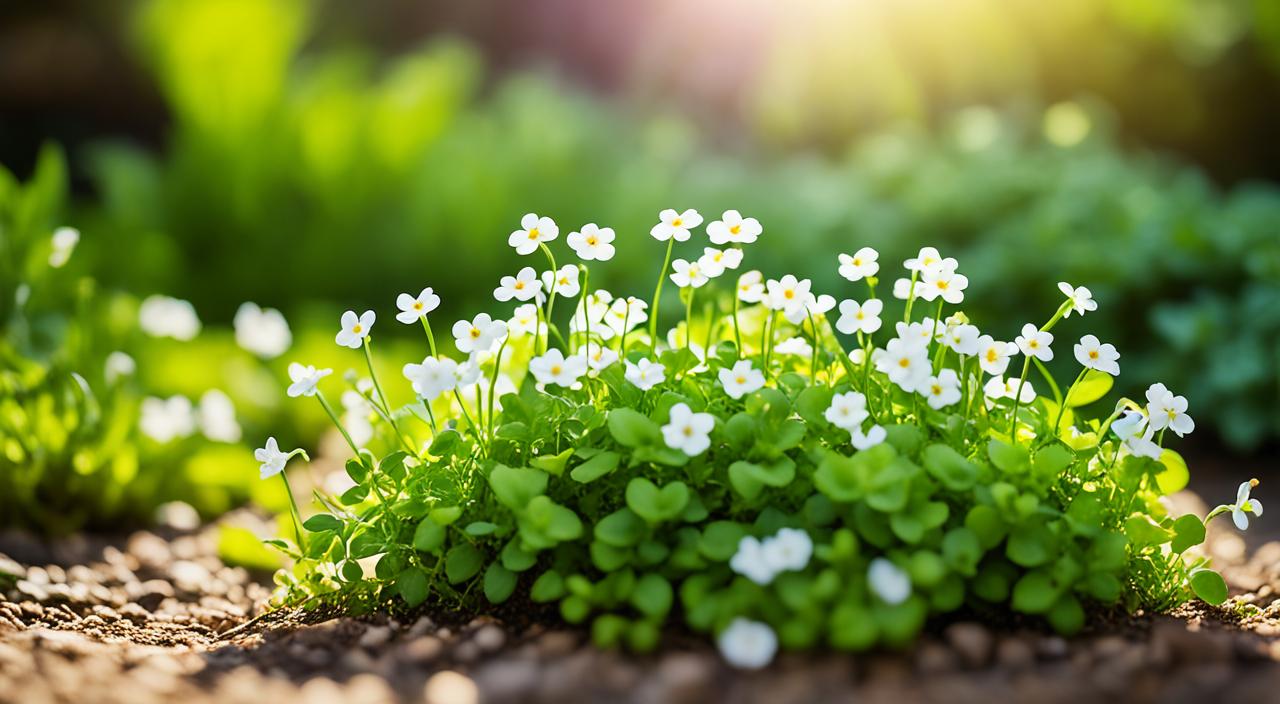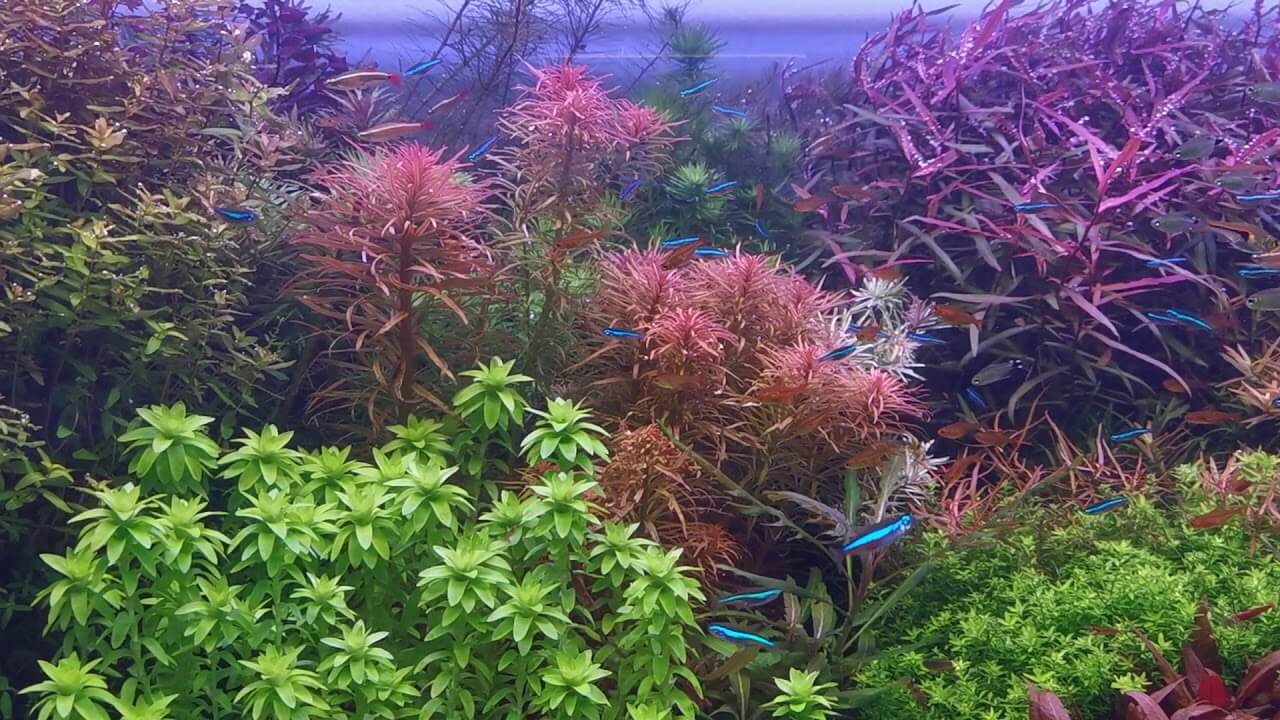When creating a captivating and serene freshwater aquarium, Cyperus helferi is a must-have aquatic grass. Its graceful appearance and low-maintenance nature make it popular among aquascaping enthusiasts. Whether you’re a seasoned aquarium hobbyist or just starting, this comprehensive guide will provide all the information you need to care for Cyperus helferi in your aquarium.
With its narrow, grass-like leaves and unique curling habit, Cyperus helferi adds an elegant touch to any aquarium. This freshwater plant originates from the streams and rivers of Thailand, where it thrives in slow-moving or still water. Its adaptability makes it suitable for various aquarium setups, including high-light tanks.
Proper placement and lighting are vital to ensuring the health and vibrancy of Cyperus helferi. It should be positioned strategically as a mid-ground plant to create a stunning visual impact. High-intensity lighting is essential for photosynthesis and growth. Alongside careful placement, maintaining optimal water quality, filtration, and flow is crucial for the plant’s well-being.
Regarding tank mates, Cyperus helferi will flourish alongside peaceful community fish species that share similar water conditions. However, avoiding aggressive or incompatible fish species that may disrupt the plant’s growth is essential.
Key Takeaways:
- Cyperus helferi is a popular aquatic grass species for freshwater aquariums.
- It features narrow, grass-like leaves and a distinctive curling habit.
- Proper placement and high-intensity lighting are essential for its growth and vibrancy.
- It thrives in slow-moving or still water, originating from the streams of Thailand.
- Careful selection of compatible tank mates is essential for its well-being.
Brief Overview Of Cyperus helferi
Cyperus helferi is a stunning and highly sought-after aquatic plant that can add beauty and vibrancy to any high-light freshwater tank. Its unique appearance, ease of care, and low-maintenance nature make it popular among aquarium enthusiasts.
Known for its grass-like leaves and striking curling habit, Cyperus helferi brings a touch of elegance to aquascaping. Its narrow leaves can reach impressive lengths of up to 30 centimetres, creating a visually captivating display in the aquarium.
Cyperus Helferi Information Table:
| Cutting the top shoots or side shoots | Descriptions |
|---|---|
| Scientific name: | Cyperus helferi |
| Common Names: | Water Cyperus, Helferi Grass |
| Origin: | Southeast Asia |
| Height: | Up to 30-50 cm (12-20 inches) |
| Growth Rate: | Moderate |
| Colour: | Bright green |
| Aquarium Placement: | Background or mid-ground |
| Water Type: | Freshwater |
| pH: | 5.5 – 7.5 |
| Care Level: | Easy to moderate |
| Light Requirements: | High; 50-70 PAR (Photosynthetically Active Radiation), 5000-7000 Kelvin, 30-50 LUX |
| CO2 Requirements: | Recommended for optimal growth |
| Temperature: | 22-28°C (72-82°F) |
| Flow Rate: | Moderate to high |
| Propagation: | Root tabs and liquid fertilizers are recommended |
| Feed Type: | Root tabs and liquid fertilizers recommended |
Expanded Light Requirements:
For Cyperus helferi, achieving lush growth requires adequate lighting. The plant thrives under high light conditions, with a PAR (Photosynthetically Active Radiation) value of 50-70. This light intensity level supports robust photosynthesis and contributes to the plant’s health and colouration. A Kelvin rating of 5000-7000K is ideal, mimicking the bright, full-spectrum light in natural habitats. This range promotes healthy growth and enhances the natural green colour of the leaves. Additionally, aiming for a LUX range of 30-50 ensures that the plant receives enough brightness without causing stress or encouraging excessive algae growth. Proper lighting, combined with CO2 supplementation and nutrient availability, will provide the best growth and appearance of Cyperus helferi in an aquarium setting.
One of the critical benefits of Cyperus helferi is its adaptability to different aquarium setups. Whether you have a planted tank, a biotope aquarium, or a community tank, this versatile plant can thrive in various environments.
When it comes to care, Cyperus helferi is considered relatively low-maintenance. It requires high-intensity lighting to support its growth and should be placed in mid-ground areas to showcase its beauty effectively. Regular pruning and removal of any dead or decaying leaves are essential to maintain the plant’s health and appearance.
Cyperus helferi is compatible with a wide range of fish species, making it an excellent addition to community tanks. However, avoiding aggressive or herbivorous fish that may damage the plant is essential.
If you’re looking for a stunning and low-maintenance plant to enhance your high-light freshwater aquarium, Cyperus helferi is an excellent choice. Its unique appearance and adaptability make it a standout feature in any aquascape.
Origins And Habitat
Cyperus helferi is a captivating aquatic plant species that traces its origins to the streams and rivers of Thailand. In its natural habitat, this plant thrives in bodies of slow-moving or still water. The serene waters of Thailand provide the ideal conditions for Cyperus helferi to flourish and exhibit its natural beauty.
The plant’s native environment offers valuable insights into the conditions necessary for its successful cultivation in freshwater aquariums. By understanding its origins and habitat, aquarists can recreate similar situations in their tanks to promote the growth and well-being of Cyperus helferi.
Morphological Characteristics
Cyperus helferi is a stunning aquatic plant known for its unique morphological characteristics. The plant features narrow, grass-like leaves that can reach impressive lengths of up to 30 centimetres. These leaves are slender, measuring only 1-2 millimetres in width, giving them a delicate appearance.
One of the most striking aspects of Cyperus helferi is its curling habit. The leaves have a distinctive curling or twisting pattern, which adds visual interest and charm to the plant. This curling habit sets Cyperus helferi apart from other aquatic plants, making it a focal point in any freshwater aquarium.
To help you visualize these morphological characteristics, take a look at the image below:
Placement And Lighting
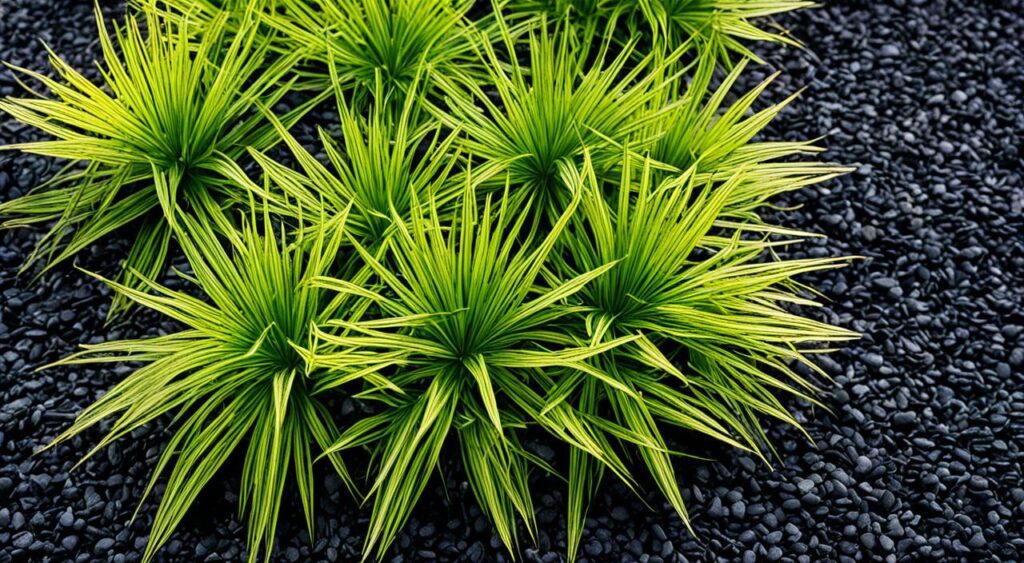
When placing Cyperus helferi in your aquarium, consider positioning it as a striking mid-ground plant. Placing it in the middle or slightly towards the front of your aquarium will showcase its unique features and create a visually appealing focal point.
Proper lighting is essential for the healthy growth of Cyperus helferi. This plant thrives in high-light aquarium setups, so providing it with sufficient light intensity is crucial. Consider using LED lights with a high Kelvin rating to mimic natural daylight and promote optimal photosynthesis.
Adequate lighting will enhance the plant’s growth and bring out the vibrant green colour of its narrow, grass-like leaves. Be sure to provide a consistent light schedule, following the recommended duration and intensity suitable for your aquarium setup.
| Placement | Lighting |
|---|---|
| Mid-ground | High-light |
Positioning Cyperus helferi in the mid-ground of your aquarium and providing it with high-intensity lighting will help create an aesthetically pleasing and thriving aquatic environment.
What Are Good Tank Mates?
To create a harmonious aquatic ecosystem in your aquarium, select compatible tank mates for your Cyperus helferi. By choosing fish species that thrive in similar water conditions and have peaceful temperaments, you can ensure the well-being of the plants and the fish. Here are some excellent tank mate options for your Cyperus helferi:
Good Tank Mates
- Neon Tetra
- Guppy
- Dwarf Gourami
- Platy
- Rasbora
- Otocinclus Catfish
Fish Species To Avoid
While it is essential to choose compatible tank mates, some fish species should be avoided when keeping Cyperus helferi in your aquarium. These species may be incompatible due to potential aggression or their specific care requirements. It is best to steer clear of the following fish:
- Tiger Barb
- Red-Tailed Shark
- Convict Cichlid
- Jack Dempsey
- Large Cichlids
- Oscar
By selecting appropriate tank mates and avoiding incompatible fish species, you can create a thriving and visually appealing aquatic environment for your Cyperus helferi.
Feeding (Fertilization)
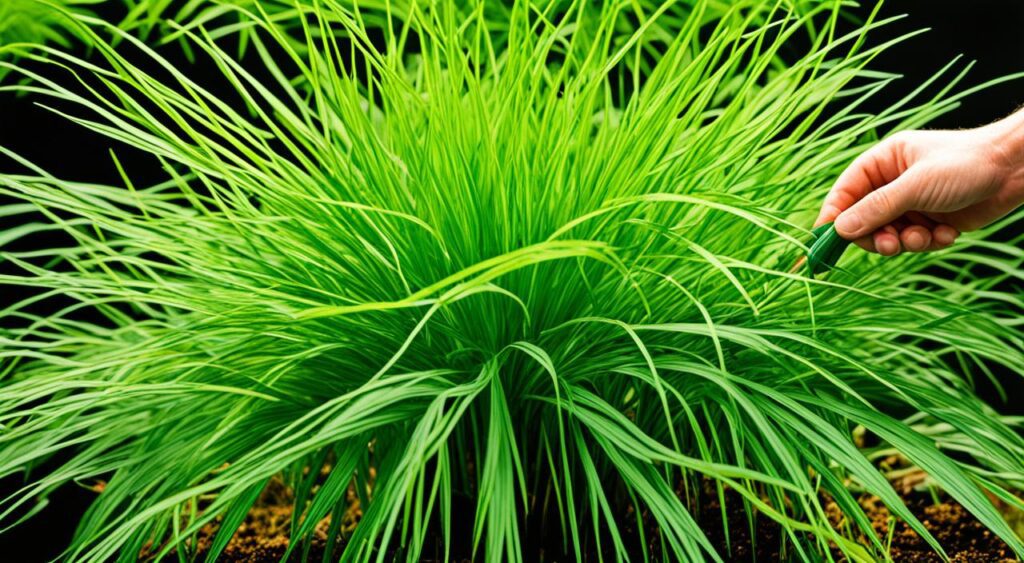
To ensure the healthy growth and vibrant appearance of Cyperus helferi in your aquarium, it is essential to provide proper feeding and fertilization. This will help meet the plant’s nutrient requirements and support its overall well-being.
How Much And How Often To Feed
Feeding Cyperus helferi involves providing it with the necessary nutrients for growth. Using a high-quality liquid fertilizer formulated explicitly for aquatic plants is recommended. Follow the manufacturer’s instructions for the correct dosage based on the size of your aquarium and the number of plants present. Typically, a weekly dose is sufficient to keep the plant adequately nourished. Take care not to overfeed, as this can lead to nutrient imbalances and negatively affect your plant’s health.
When feeding Cyperus helferi, it’s essential to consider the other inhabitants of your aquarium, such as fish and invertebrates. Ensure that the fertilizer used is safe for them and does not cause any harm. If uncertain, consult a knowledgeable aquarium expert or do thorough research before introducing new fertilizers.
Regularly monitoring your aquarium’s water parameters, such as nitrate, phosphate, and potassium levels, can help determine if the plant needs additional nutrition. Adjust the fertilization regime accordingly, considering every aquarium setup is unique, and nutrient requirements may vary.
| Feeding Tips for Cyperus helferi |
|---|
| Feed Cyperus helferi every week, adjusting as necessary based on aquarium conditions. |
| Follow the recommended dosage instructions provided by the manufacturer. |
| Feed Cyperus helferi on a weekly basis, adjusting as necessary based on aquarium conditions. |
| Monitor water parameters regularly to ensure nutrient balance. |
| Avoid overfeeding to prevent nutrient imbalances. |
| Consider the compatibility of fertilizers with other aquarium inhabitants. |
CO2 Injection
Types
CO2 injection is a crucial factor in ensuring the optimal growth and health of Cyperus helferi. There are various types of CO2 injection methods available for aquarium enthusiasts. Carbon dioxide supplementation can significantly enhance the growth and development of aquatic plants, including Cyperus helferi.
Carbon dioxide injection systems provide a controlled release of CO2 into the aquarium, mimicking natural conditions and promoting vigorous plant growth. Different types of CO2 systems offer varying degrees of convenience, precision, and control over CO2 levels in the water. Let’s explore some commonly used CO2 injection methods:
- Pressurized CO2 Systems: These systems utilize pressurized CO2 cylinders connected to a regulator, which helps control the release of CO2 into the aquarium. It offers precise control over CO2 levels and is suitable for larger aquarium setups.
- DIY Yeast CO2 Reactor: This method uses a homemade setup with yeast and sugar to produce carbon dioxide. The generated CO2 is funnelled into the aquarium using a reactor or diffuser. It is a cost-effective option but may require frequent refilling and maintenance.
- Citric Acid/Baking Soda Reaction: This DIY method combines citric acid and baking soda to produce carbon dioxide. The reaction generates CO2 gas, which is then released into the aquarium using a diffuser or reactor. It provides a consistent source of carbon dioxide but may require regular adjustments.
- Liquid Carbon Dioxide Supplements: Liquid carbon dioxide supplements are available in the form of liquid additives that contain dissolved CO2. These supplements are added directly to the aquarium water and provide a convenient option for those who prefer not to use gas-based CO2 injection systems.
Regardless of the type of CO2 injection method chosen, monitoring CO2 levels regularly and adjusting accordingly to avoid imbalances that could harm the aquarium’s ecosystem is essential. When done correctly, carbon dioxide supplementation can significantly benefit the growth and overall health of Cyperus helferi and other aquatic plants in the aquarium.
Care
Proper care is essential for maintaining the health and vibrancy of Cyperus helferi in your aquarium. By ensuring the ideal planted tank parameters, water quality, filtration, and flow, you can create an optimal environment that allows this aquatic grass species to thrive.
Planted Tank Parameters
When setting up a planted tank for Cyperus helferi, it’s essential to consider specific parameters to create a suitable habitat for the plant. Here are some key factors to keep in mind:
- Lighting: Cyperus helferi requires moderate to high lighting conditions to support its growth. Providing full spectrum lighting or LED lights with a colour temperature of 6500K to 10000K is recommended.
- Substrate: Use a nutrient-rich substrate, such as aquasoil or a mixture of gravel and laterite, to provide essential nutrients for the plant’s root system.
- C02 Injection: Carbon dioxide supplementation through a CO2 injection system promotes healthy growth and vibrant colouration. Maintain a CO2 level of 20-30 ppm for optimal results.
- Temperature: Keep the water temperature within the range of 70-82°F (21-28°C) to mimic the natural habitat of Cyperus helferi.
- pH Level: Aim for a slightly acidic to neutral pH level between 6.5 and 7.5 for optimum growth.
Water Quality
Providing excellent water quality is crucial for the overall well-being of Cyperus helferi. Here are some guidelines for maintaining suitable water conditions:
- Ammonia and Nitrite Levels: Ensure that ammonia and nitrite levels are consistently at zero to prevent harm to the plant. Regularly test the water using reliable aquarium test kits.
- Nitrate Levels: Keep nitrate levels below 20 ppm through routine water changes and proper filtration.
- Hardness: Cyperus helferi thrives in moderate to slightly hard water. Aim for a general hardness (GH) level of 4-8 dGH.
Filtration
Efficient filtration is essential for maintaining water quality and removing impurities. Consider the following points when selecting and setting up a filtration system:
- Filter Type: Choose a filter that provides mechanical and biological filtration, such as a canister filter or a hang-on-back filter.
- Filter Media: Utilize mechanical media, such as filter sponges, to remove debris and particulate matter, and biological media, like ceramic rings or bio balls, to promote beneficial bacteria growth for biological filtration.
- Flow Rate: Cyperus helferi prefers moderate water flow. Adjust the flow rate of your filtration system accordingly, ensuring gentle water movement within the aquarium.
Flow
Water flow within the aquarium is vital in maintaining a healthy environment for Cyperus helferi. Consider the following aspects of water flow:
- Avoid Dead Spots: Ensure that the water flow reaches all aquarium areas, including around Cyperus helferi’s roots, to prevent the formation of stagnant areas.
- Avoid Excessive Flow: While Cyperus helferi benefits from moderate water flow, excessive flow can lead to stress and damage to the plant. Adjust the flow rate of your filtration system accordingly to avoid strong currents.
Following the care guidelines outlined above, you can create an optimal environment for Cyperus helferi, supporting its growth and well-being in your planted aquarium.
Aquarium Maintenance
Maintaining a healthy and thriving Cyperus helferi aquarium requires regular maintenance and attention to specific factors. In this section, I will discuss the essential aspects of aquarium maintenance for successfully keeping Cyperus helferi in your tank.
Testing Water Conditions
Testing the water conditions is crucial for ensuring the optimal growth and well-being of Cyperus helferi. Regularly monitoring the water parameters such as pH, temperature, ammonia, nitrite, nitrate levels, and other essential nutrients is essential. Conducting these tests will help you identify any imbalances or deficiencies in the water, allowing you to make necessary adjustments to maintain the ideal conditions for your Cyperus helferi.
You can use test kits specifically designed for aquariums to test the water conditions. These kits typically include test strips or liquid reagents that provide accurate and reliable results. Follow the instructions in the test kit to perform the tests and interpret the results accurately. By regularly testing the water conditions, you can proactively address any issues and ensure a healthy environment for your Cyperus helferi plants.
How To Set Up Your Aquarium Tank
Properly setting up your aquarium tank is crucial for creating an ideal environment for Cyperus helferi. Here are some essential steps to follow:
- Start by thoroughly cleaning the tank and removing any debris or impurities. Rinse the tank with water and wipe it down with a clean cloth.
- Add a layer of substrate to the bottom of the tank. Choose a substrate suitable for aquatic plants and providing the necessary nutrients.
- Position any hardscape elements, such as rocks or driftwood, in the tank. These elements can serve as visual focal points and provide hiding places for fish.
- Add water to the tank, ensuring that the water level is appropriate for the size and requirements of your Cyperus helferi plants.
- Install an appropriate filtration system to maintain water clarity and quality. The filtration system will help remove debris and impurities, ensuring your plants have a clean and healthy environment.
- Provide adequate lighting for your Cyperus helferi plants. Select lights that emit the appropriate spectrum and intensity for optimal growth.
Once your aquarium tank is set up, you can carefully introduce your Cyperus helferi plants and arrange them according to your desired layout. Take care not to damage the delicate roots or leaves during this process.
Propagation Methods
Propagating Cyperus helferi is an excellent way to expand your plant population and create more lushness in your aquarium. There are a few different methods you can use to propagate this aquatic grass:
-
- Dividing the plant: Cyperus helferi can be divided by carefully separating the roots into smaller clumps. Each clump should have a healthy root system and sufficient leaves.
- Plantlets: Cyperus helferi produces plantlets, or small plants, that sprout from the main plant. These plantlets can be carefully detached and planted individually in the substrate.
- Runners: Cyperus helferi also produces runners, which are long, thin stems that develop roots and new plants along their length. You can carefully detach the new plants from the runners and plant them on the substrate.
Regardless of your propagation method, it is essential to provide the new plants with the appropriate water conditions, lighting, and care to ensure their successful growth.
| Aspect | Recommendations |
|---|---|
| Water Conditions | – Test water parameters regularly – Maintain appropriate pH levels – Monitor ammonia, nitrite, and nitrate levels |
| Aquarium Setup | – Clean the tank thoroughly – Use a suitable substrate – Position hardscape elements – Install proper filtration system – Provide adequate lighting |
| Propagation Techniques | – Divide the plant – Utilize plantlets – Harvest runners |
Health And Disease
This section provides insights into the health and potential diseases that can affect Cyperus helferi. It outlines the signs of good and poor health to watch out for and joint health issues and their appropriate treatments. Additionally, it touches upon common plant pests that can affect Cyperus helferi and how to deal with them.
Signs Of Good Health
When Cyperus helferi is in good health, it exhibits signs indicating its well-being. These signs include:
- Rich, vibrant green colour
- Healthy root system
- Lush growth and expansion
- No signs of yellowing or browning leaves
To maintain the excellent health of Cyperus helferi, it is essential to provide the necessary care and maintenance, including proper lighting, fertilization, and ideal water parameters.
Signs Of Poor Health
Identifying signs of poor health in Cyperus helferi is crucial to address potential issues promptly. Some of the signs that indicate poor health in Cyperus helferi include:
- Yellowing or browning leaves
- Stunted growth or wilting
- Decaying roots
- Presence of algae or other plant diseases
Addressing these signs promptly can help prevent further deterioration and restore the plant’s health.
Common Health Issues And Treatment
Cyperus helferi may encounter common health issues that require specific treatments. Some of the common health issues include:
| Health Issue | Treatment |
|---|---|
| Algae Overgrowth | Regular cleaning, adjustment of lighting and CO2 levels, and introduction of algae-eating fish or invertebrates |
| Nutrient Deficiency | Supplementing with appropriate fertilizers and adjusting nutrient levels in the aquarium |
| Root Rot | Trimming affected roots and improving water circulation and aeration to prevent stagnant conditions |
| Plant Diseases | Proper quarantine and treatment with suitable remedies or adjustments to water parameters |
It is crucial to accurately identify the specific health issue to provide the appropriate treatment and prevent further damage to Cyperus helferi.
Plant Pests
Cyperus helferi can be susceptible to certain plant pests, affecting its health and appearance. Common plant pests that may encounter Cyperus helferi include:
- Snails
- Algae-eating fish
- Aphids
- Whiteflies
Dealing with plant pests may require introducing natural predators, manual removal, or using suitable pest control methods that do not harm the plant or the aquarium ecosystem.
Summary
Throughout this article, we have explored the beauty and versatility of Cyperus helferi, a widespread aquatic grass species that adds elegance and serenity to freshwater aquariums. In summary, Cyperus helferi is a low-maintenance plant that thrives in high-light aquarium setups.
We have learned that Cyperus helferi originates from the streams and rivers of Thailand, where it naturally grows in slow-moving or still water. Its morphological characteristics, including narrow grass-like leaves and a curling habit, make it a visually captivating addition to any aquarium.
Regarding care, Cyperus helferi requires placement as a mid-ground plant and benefits from high-intensity lighting. It can be paired with compatible tank mates, but avoiding fish species that may display aggressive behaviour is essential.
Proper feeding, fertilization, and CO2 injection are essential for the health and optimal growth of Cyperus helferi. It thrives in specific planted tank parameters, including water quality, filtration, and flow. Regular maintenance, from testing water conditions to propagation techniques, will ensure the plant’s long-term success in the aquarium.
In terms of health, signs of good and poor health should be monitored, as well as joint health issues and treatment options. Lastly, garden pests can threaten Cyperus helferi, so proactive measures are necessary to control and eliminate them.
In conclusion, Cyperus helferi is an exquisite aquatic grass that can elevate the beauty of any freshwater aquarium. With proper care and attention to its specific needs, it can thrive and become the centrepiece of a stunning aquascape.
FAQ
What are the care requirements for Cyperus helferi in an aquarium?
Cyperus helferi requires high-intensity lighting and CO2 supplementation for optimal growth. It also thrives in well-maintained water conditions with a suitable filtration system.
Where is Cyperus helferi native to?
Cyperus helferi is native to Thailand, where it grows naturally in streams, rivers, and other bodies of water with slow-moving or still water.
What are some good tank mates for Cyperus helferi?
Peaceful community fish species such as tetras, rasboras, and danios make good tank mates for Cyperus helferi. Avoid aggressive or fin-nipping fish species.
How often should I feed Cyperus helferi and what nutrients does it need?
Feed Cyperus helferi sparingly and provide it with a balanced aquarium plant fertilizer to meet its nutrient requirements.
What are the different methods of propagating Cyperus helferi?
Cyperus helferi can be propagated through division, where the plant is split into smaller clumps and replanted. It can also propagate through runners that develop from the mother plant.
What are the signs of good health for Cyperus helferi?
Signs of good health for Cyperus helferi include vibrant green leaves, strong root development, and active growth.
What are the common health issues that can affect Cyperus helferi?
Cyperus helferi can be susceptible to nutrient deficiencies, algae growth, and pest infestations. Poor water conditions and inadequate care can also lead to the decline of the plant’s health.
How should I test the water conditions for Cyperus helferi?
Regularly test the water conditions for pH, ammonia, nitrite, and nitrate levels to ensure they are within the appropriate range for Cyperus helferi’s health and growth.

